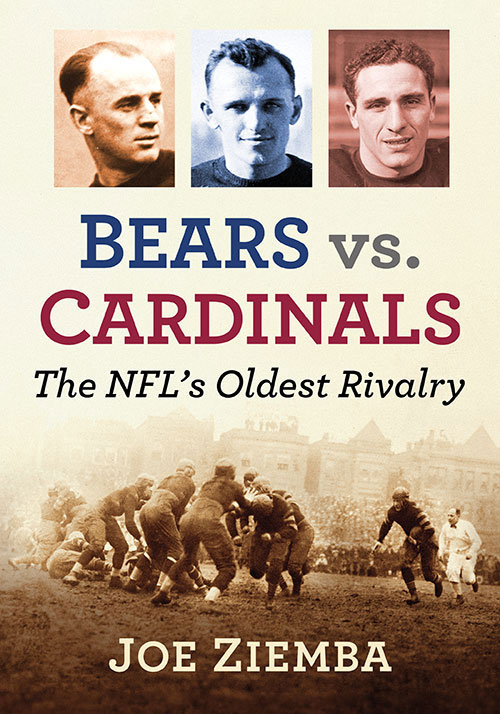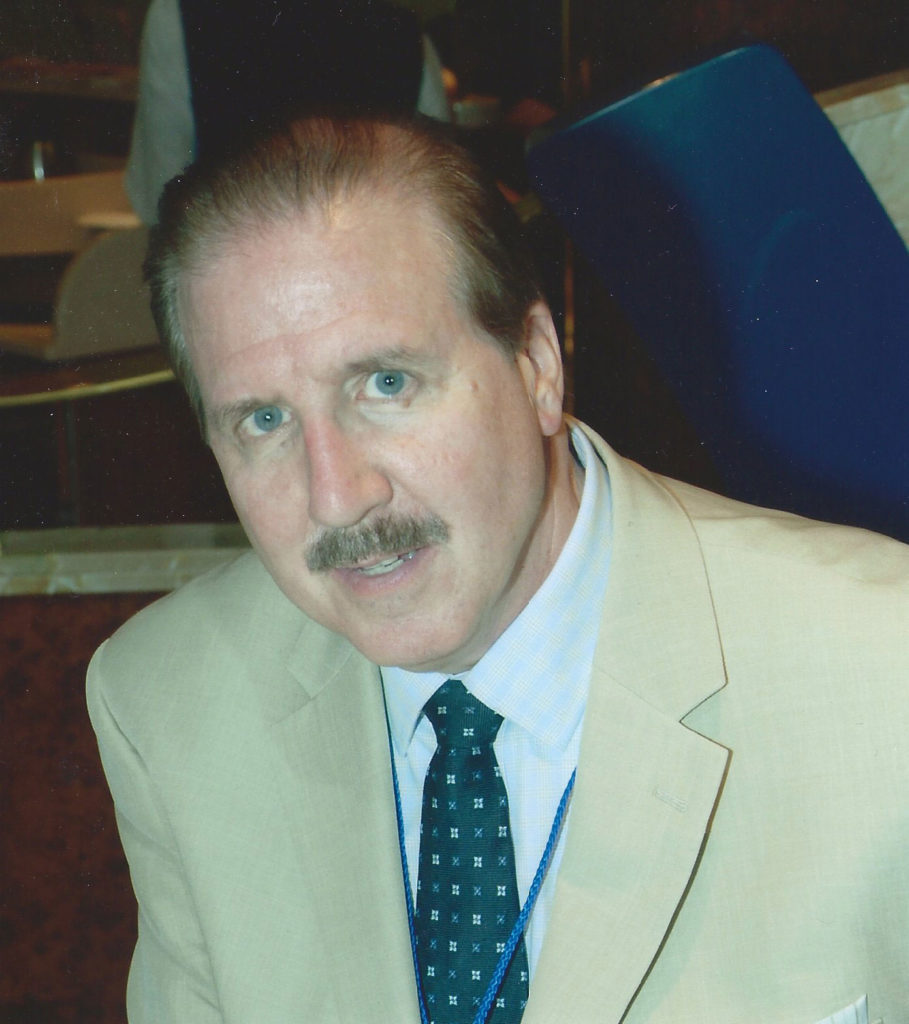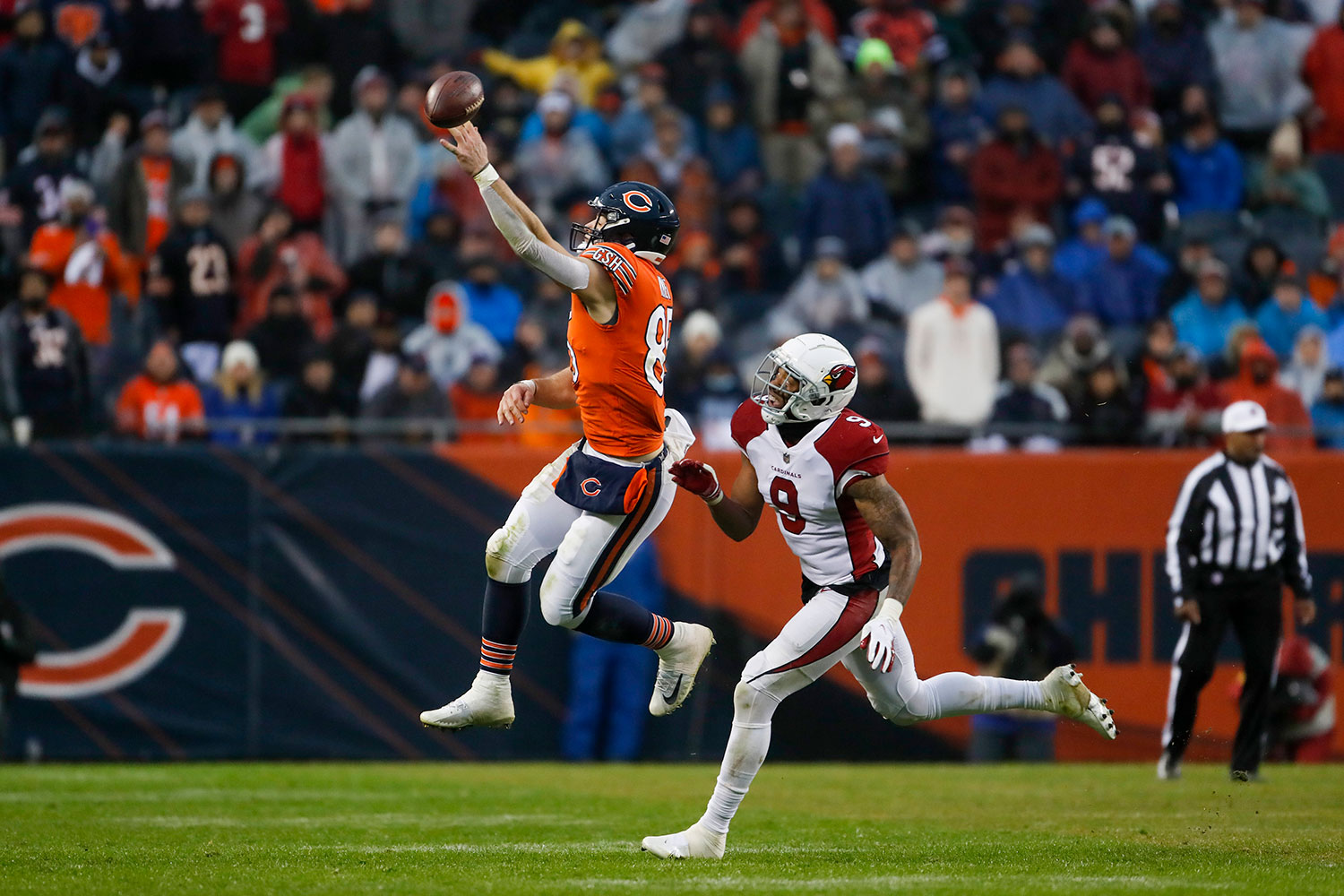“There’s plenty of cities that have two NFL teams,” Bears season ticket holder and football-team-losing mayor Lori Lightfoot said after the Bears put an option on Arlington Park racetrack, with the intention of building a new stadium there.
Lightfoot was floating the idea of luring another pro football team to Chicago, to replace the Bears in Soldier Field. Why not bring back a team that’s already played in Chicago, when it was a two-NFL-teams town — a team that’s already played home games in Soldier Field? We are talking, of course, about the Cardinals.
The Cardinals currently call Glendale, Arizona, home, but they are actually the NFL’s oldest franchise, formed on the South Side of Chicago in 1899 as an amateur team known as the Morgan Athletic Club. Later calling themselves the Racine Cardinals, because they played at Normal Park on Racine Avenue, they became charter members of the NFL in 1920.
In that inaugural season, the Cardinals defeated the Decatur Staleys, 7-6, at Normal Park, which the Cardinals rented for $15 a game. It was the only loss for the Staleys, who would move to Chicago the following year and become the Bears. The game is recounted in a new book, Bears vs. Cardinals: The NFL’s Oldest Rivalry, by Joe Ziemba (McFarland Books, 2022). The game had been scheduled just a few days before, so both teams worried it wouldn’t draw a crowd.

“But then, a strange thing happened,” writes Ziemba. “People came to the game! Lots of people. They filled the stands at tiny Normal Park, stood tightly along the sidelines, watched from neighboring roofs, and peeked through holes in the stadium fencing. Maybe 5,000 of them, all drawn to this fascinating new project known as professional football.”
George Halas was so miffed by the loss that he immediately scheduled a rematch for December 5, at Cubs Park. The Staleys won that game, 10-0.
The Bears and the Cardinals are the only franchises remaining from the original NFL. The Packers wouldn’t join the league until 1921. While the Bears have played the Packers more often, they’ve played the Cardinals one year longer. The two Chicago teams played each other in the first pro football game at Soldier Field, on November 11, 1926. It was a benefit for Rosary College, which is now part of Dominican University.
Ziemba, who lives in Frankfort, is also the author of When Football Was Football: The Chicago Cardinals and the Birth of the NFL, making him the world’s leading — and only — Chicago Cardinals historian. He gives about 20 talks every fall to die-hard Cardinals fans in the Chicago area. Whenever he vacations in Arizona, he attends a Cardinals game. The Cardinals Ring of Honor, inside State Farm Stadium, honors players from the Chicago years, including Hall of Famers Paddy Driscoll and Charley Trippi, who died this month at age 100. Most fans, though, are unaware of the team’s birthplace.
“I always get people who say, ‘I didn’t realize they were from Chicago,’” Ziemba says. “I thought they were from St. Louis.”
In 1959, the Cardinals made Soldier Field their home stadium, after playing for many years at Comiskey Park. That year, Ziemba’s father took his 9-year-old son to his only Chicago Cardinals game.

“It all traces back to my father, also named Joe Ziemba, who was drafted by the Cardinals in 1940,” Ziemba says of his Cardinals fandom. “He never talked about it too much, but when we were moving probably for the eighth time, my wife and I had these boxes of stuff we were getting rid of. I looked through a box of his belongings, which included a great deal of correspondence, including his contract with the Cardinals. He was paid or would have been paid $110 per game, but he had to supply his own shoes and shoulder pads. That was the NFL in 1940. He hurt his knee and decided that he could make more money coaching high school football in Chicago than he could playing in the NFL. So he coached at Morgan Park Military Academy on the South Side.”
It turned out to be the Cardinals’ only season in Soldier Field. The next year, they moved to St. Louis, unable to compete with the more successful Bears. Halas was so eager to see the Cardinals go he contributed $500,000 to their moving expenses. According to the NFL’s bylaws at the time, the Bears were not allowed to broadcast road games to Chicago fans when the Cardinals were in town, so as not to diminish their attendance. Which was already too low to make the team viable, usually around 15,000 fans.
“It was basically revenue,” Ziemba said of the Cardinals’ decision to leave Chicago. “The Bears always had a solid fan base. The Cardinals, in Comiskey Park, were never able to draw many fans unless they played the Bears. The Cardinals were very good in the early ’20s, then they got very bad in the ’30s and ’40s. Fans like to come out and see a winner.”
The Cardinals did win their last NFL championship in Chicago, in 1947. The team played in Super Bowl XLIII, but lost to the Pittsburgh Steelers, and now has the longest title drought in professional sports. Is there any hope of the Cardinals returning to the city of their only success? The Cardinals have a sweet deal in Arizona, with a modern stadium and the nation’s 10th largest metro area all to themselves. Pro football teams have returned home before, though. The Rams spent 21 seasons in St. Louis before moving back to Los Angeles.
“There’s no reason why the Chicago area couldn’t support two professional teams,” Ziemba says. “I mean, New York and L.A. do. These big cities have lots of fans and they’ll quickly generate support from a local fan base. It may take a year or so. First, there’ll be those who are attracted to see another team and they might switch their loyalties from the Bears to somebody else.”
The Cardinals already have fans in Chicago: “A lot of people were upset when the Cardinals left in 1960,” Ziemba says. “It seems to have passed down through the generations.” At his talks, “we get a few folks who remember when they played here, and their kids. We run into a lot of families of players in the 1940s and ’50s. It just seems like they’ve kept that allegiance because they grew up with it.”
Ziemba is now a Bears fan, but he would be eager to switch his loyalty back to the first football team he ever loved.
“There is hope for the Cardinals coming back,” he says.



